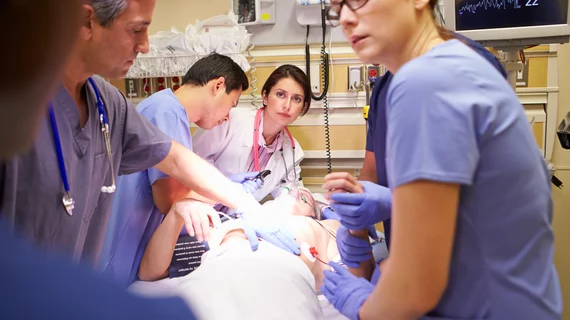Incorporating an interventional radiology (IR) team into the primary trauma surveys of patients admitted into the emergency department produces better outcomes, according to research published this week in Diagnostic and Interventional Imaging.
The use of various IR procedures in emergency settings has expanded in recent years but the overall survival benefits to patients undergoing these exams are not yet fully understood. Realizing the value of including IR teams in initial trauma workflows could guide institutions in implementing potentially life-saving protocols.
“A workflow in which the IR team participates in the primary survey conducted 24 hours a day and seven days a week could improve the survival of patients who require IR procedures,” corresponding author, Ichiro Okada, with the Department of Critical Care Medicine and Trauma at the National Hospital Organization Disaster Medical Center in Tokyo, and co-authors hypothesized.
To gain a better grasp of the specific impact IR teams can have in trauma settings, researchers retrospectively compared the records of 160 hemodynamically stable and unstable patients who underwent IR procedures at a single institution between 2012 and 2019. A patient’s probability of survival (Ps) was then compared against their survival at hospital discharge.
About 125 patients were hemodynamically stable (HSG) compared to 35 in the hemodynamically unstable group.
When IR teams served on the primary trauma survey the observational survival rate was 4.9% higher than the Ps rate for the stable group and 24.6% higher for the unstable group. It took an average of 54 minutes to initiate IR procedures for the unstable group. Additionally, the stable group had an overall survival rate of 96%, versus 91.4% in the unstable group.
The authors noted that incorporating an IR team in the trauma workflow allows them the ability to consult with a surgical team while a patient is being stabilized or resuscitated. This reduces the amount of time it takes for patients to receive life-saving interventions.
“The participation of the IR team in the primary survey helps precise decision-making as well as prompt intervention,” the authors wrote. “If the present workflow is applied better outcomes can be expected.”

